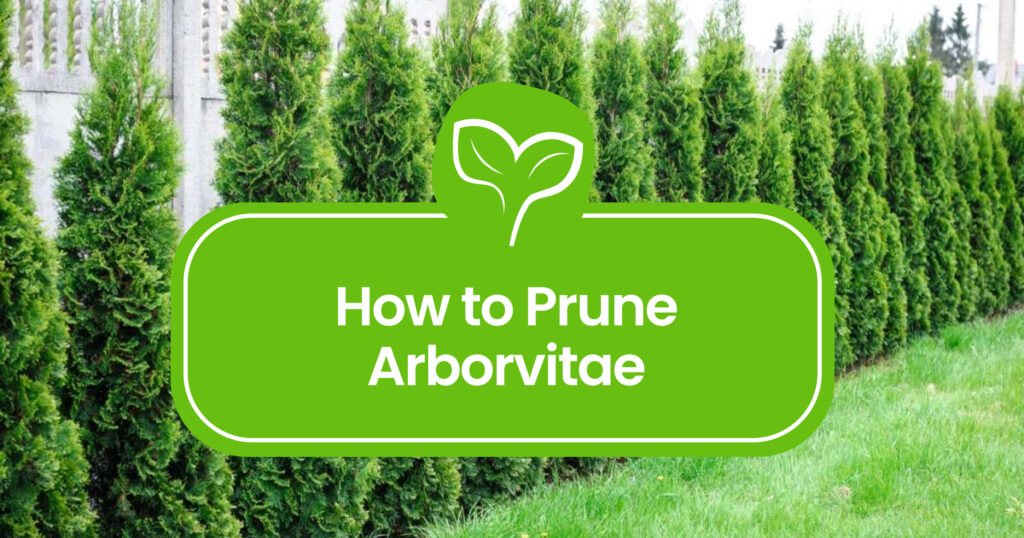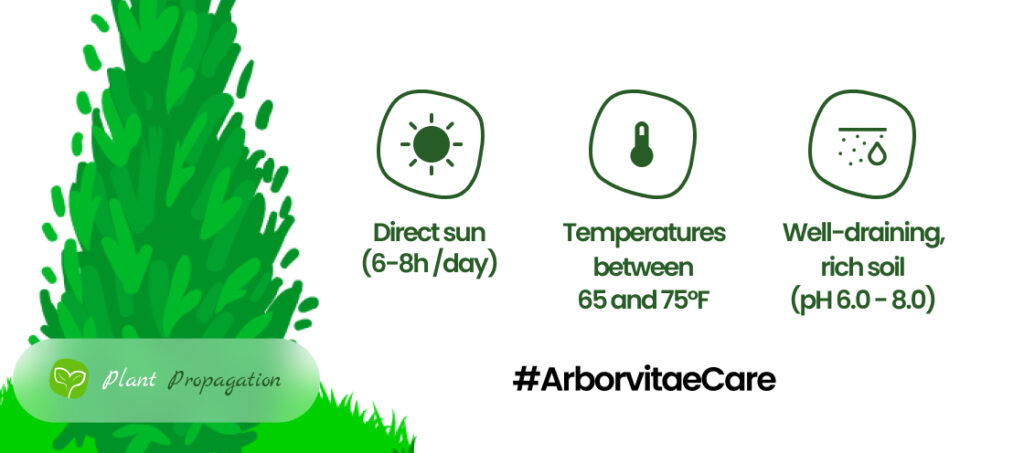
In this article, we unravel the secrets of pruning arborvitae, those majestic evergreens that grace our landscapes. We’ll dive into the when, how, and why of pruning, demystifying the process with practical tips for anyone with green aspirations. Whether you’re a seasoned gardener or just starting, join us on this venture to sculpt, trim, and elevate your arborvitae to new heights of beauty and vitality. It’s time to unlock the green marvels within your garden!
When to Prune Arborvitae?
For the happiest and healthiest arborvitae, circle mid-spring on your calendar for the initial pruning. Why? Well, that’s when this green buddy is gearing up for some serious growth, with fresh new branches sprouting.
Arborvitae loves doing its thing on new wood, so trimming during this time is like giving it a green light to flourish. Plus, mid-spring is your golden opportunity for some serious pruning magic, especially if your arborvitae have decided to go wild and overgrown. Mid-fall you only want to do some minor trimming to keep your tree in check.
The Tools You’ll Need
Now, let’s talk tools. To shape arborvitae, you’ll want to have the right arsenal. Your best friend during this mission will be the good old Pruning Shears and optionally, a Hedge Pruner. You might want to pack a Pruning Saw too if you need to remove thicker branches. Oh, and don’t forget the gloves & safety glasses – those arborvitae can be a tad prickly, and nobody likes a gardening-related battle scar!

Pruning Arborvitae Step-by-Step
Maintaining The Perfect Pyramidal Form

If you’re aiming for that classy pyramid look for your arborvitae, you need to give a good trim to your tree twice a year – once in spring and again in fall. Why? Well, regular snips in these seasons help steer clear of major, tough cuts later on.
When those unruly branches start sticking out, grab your pruners for a quick tidy-up.
- First Trim (Late Spring): Around late spring, after the fresh burst of growth, it’s prime time for a more intensive prune. If your tree needs some serious shaping, this is when you can make those deeper cuts.
- Second Trim (Mid-Fall): As the summer fades into fall, your arborvitae keeps growing. The mid-fall trim is just an easy touch-up, avoiding heavy cuts. It’s like giving your tree a neat haircut for the upcoming holiday season – less maintenance next season and a sharp-looking landscape!
Maintaining the Perfect Height
When it comes to height control, a little trim goes a long way. If the leader (the top dog branch) is getting a too tall, it’s all good—just don’t go overboard. Going for a dramatic cut, like more than half, can be harmful for your tree.
Here’s the trick: use a reduction cut a few inches below the tips of the remaining branches. This not only hides the cut but also keeps things looking natural. The tallest of the surviving branches takes the lead from here.
Pruning for Health
When you are pruning for enhanced health, always start by removing any dead or diseased branches – they’re like the garden equivalent of dead weight. You can also Improve air circulation by thinning out some of the denser areas, allowing your arborvitae to breathe. And here’s a pro tip: don’t forget to keep an eye out for any unwanted guests (read: pests) and evict them pronto.
The most common pests that plague Arborvitae are these:
Tips for Hedge Pruning
If you need some hedge-pruning tips, we’ve got you covered!
- Start at the Bottom: Begin trimming from the hedge’s base, focusing on areas with fewer new growths. This sets the upward angle and ensures a lush, uniform appearance.
- Multi-Directional Trim: Trim your hedge from various directions—bottom-up, side-to-side, and top-down—for a full and healthy look, avoiding long, unruly shoots.
- Mind the Brown Parts: Avoid cutting into the brown areas without needles to maintain the classic green brush effect. Pruning when hedges are young prevents creating bare spots later on.
- Prioritize Upper Trims: Since the upper part grows faster, allocate more pruning attention to maintain balance and allow better nutrient flow to the lower sections.
- Top Trim Comes Last: Save the top trim for last after attending to the sides. Use a marked stick for even height, ensuring a uniformly sculpted arborvitae hedge.
Aftercare
- Keep an Eye Out: Take a peek at your arborvitae regularly for any signs of trouble, like leaves turning brown or wilting. If you spot any issues, act quickly to fix them – catching problems early makes a big difference in a successful recovery.
- Keep it Hydrated: Water your arborvitae often after giving it a trim to keep the soil nice and moist.
- Give it a Little Boost: If your arborvitae seems to be taking its time coming back, consider adding some compost or aged manure.

Frequently Asked Questions
What is the best time to trim arborvitae?
The best time to trim arborvitae is in mid-spring when new growth appears, promoting healthy and robust development. This period is great for deep cuts, perfect for reshaping and taming overgrown arborvitae.
Is it OK to cut the top off arborvitae?
If done correctly, topping arborvitae can be OK, however, you are going to change the shape of the plant forever. If you do not want your Arborvitae to grow higher, it is not a cardinal sin.
How do you prune an overgrown arborvitae?
To prune overgrown arborvitae, use pruners or loppers (or a saw if necessary) to trim targeted branches, ensuring not to cut back more than 20% of the shrub’s height. Maintain a wider base than the top to ensure lower branches still get sunlight for healthy growth.
Will arborvitae grow back after trimming?
Yes, arborvitae will indeed grow back after trimming. New buds will sprout near the stump cuts, leading to renewed growth. However, it’s important to note that the growth may surpass the desired height quickly, and there might be some loss in the root system as the canopy and roots adjust to the changes.

